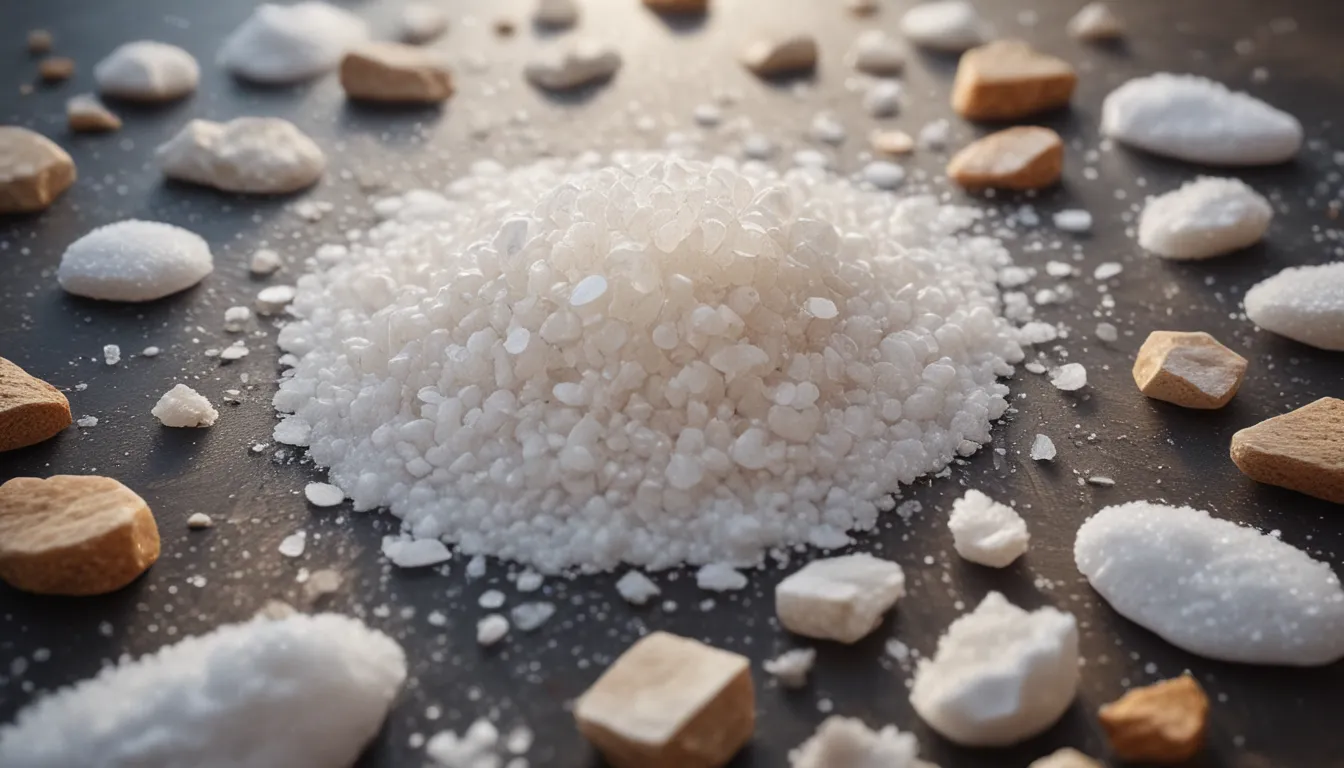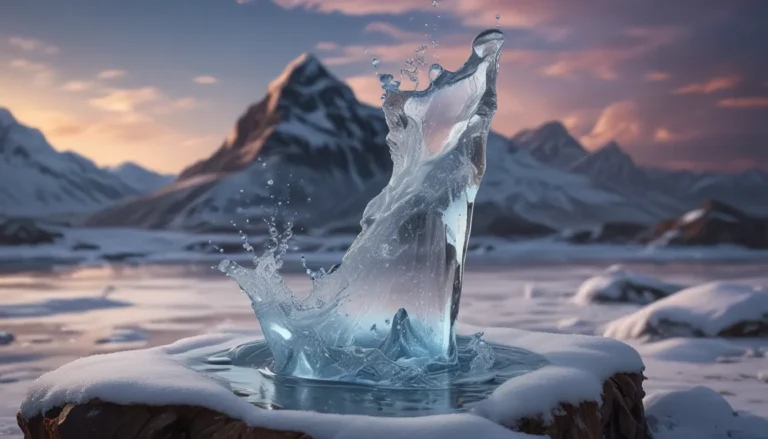A Note About Images: The images used in our articles are for illustration purposes only and may not exactly match the content. They are meant to engage readers, but the text should be relied upon for accurate information.
Rock salt, also known as halite, is a mineral form of sodium chloride that is widely utilized in various aspects of life, from culinary practices to industrial applications and even therapeutic purposes. This naturally occurring substance has a rich history and significant importance in many fields. In this comprehensive guide, we will explore 10 intriguing facts about rock salt, shedding light on its properties, formation, historical significance, and diverse range of uses. Whether you are a chemistry enthusiast, a culinary aficionado, or simply curious about the world around you, this article aims to provide you with valuable insights into the fascinating world of rock salt.
The Origin of Rock Salt: A Form of Halite
Rock salt is a naturally occurring mineral form of sodium chloride, commonly found in massive beds that date back to ancient seas and lakes. It is often mined and processed into small grains or used in its natural crystal form. The name “rock salt” is derived from the Greek words “halos” and “lithos,” which translate to “salt rock.”
The Practical Applications of Rock Salt
De-Icing Roads
One of the most common uses of rock salt is for de-icing roads and highways during winter. By lowering the freezing point of water, rock salt helps prevent the formation of ice, ensuring safer driving conditions.
Water Softening
Rock salt plays a vital role in the process of water softening. It helps remove the hardness in water by replacing calcium and magnesium ions with sodium ions, making the water suitable for various household uses.
Food Preservation
For centuries, rock salt has been utilized as a natural preservative for meats, fish, and other food items. Its ability to draw out moisture helps in preserving food and inhibiting the growth of spoilage-causing microorganisms.
The Formation and Deposits of Rock Salt
Underground Deposits
Large underground deposits of rock salt are found in different regions globally, resulting from the evaporation of saline water and subsequent compression of salt crystals over millions of years. Countries such as the United States, the United Kingdom, China, and Germany are known for their extensive rock salt deposits.
Chemical Industry Utilization
Rock salt serves as a crucial raw material in the chemical industry, supporting the production of essential chemicals like chlorine and caustic soda. Its versatility and abundance make it an indispensable resource for various manufacturing processes.
The Therapeutic Properties of Rock Salt
Traditional Medicine
Rock salt is renowned for its therapeutic properties and has been utilized in traditional medicine for its healing effects. Salt therapy, involving the inhalation of salt-infused air, is believed to have beneficial effects on respiratory conditions.
Bath Salts and Exfoliating Scrubs
Rock salt is a popular ingredient in bath salts and exfoliating scrubs, offering relaxation and skin-soothing benefits. When added to bath water, it can help relax muscles, soothe skin irritations, and provide a rejuvenating experience for the body and mind.
Additional Uses of Rock Salt
Livestock Feed
Rock salt is an essential component of livestock feed, providing animals with necessary sodium and chloride for maintaining fluid balance, nerve function, and overall health.
Formation and Evaporation
The crystallization of rock salt is a result of the evaporation of saline water, leaving behind sodium chloride crystals that accumulate over time to form extensive salt deposits.
In conclusion, rock salt, or halite, is a versatile mineral with a rich history and diverse range of practical applications. From its origin in ancient seas to its modern-day utilization in various industries, rock salt continues to play a critical role in our daily lives. Understanding the unique properties and uses of rock salt can deepen our appreciation for this remarkable mineral and its significance throughout history.
Incorporating Rock Salt Into Your Lifestyle: Salt Lamps and Beyond
In addition to its traditional uses, rock salt offers unique and soothing benefits when incorporated into your living spaces. Salt lamps, crafted from rock salt crystals, emit a warm and inviting glow that creates a calming atmosphere in any room. Discover the beauty and tranquility that salt lamps can bring to your home decor, providing a natural ambiance and a sense of serenity.
Enhancing Your Knowledge: Frequently Asked Questions
-
What is rock salt?
Rock salt is a naturally occurring mineral form of sodium chloride, commonly found in underground deposits and sedimentary layers. -
How is rock salt formed?
Rock salt is formed through the evaporation of ancient seas and lakes, resulting in the accumulation of crystallized salt deposits over millions of years. -
What are the main uses of rock salt?
Rock salt is utilized for de-icing roads, culinary purposes, chemical production, and various industrial applications. -
Is rock salt edible?
Yes, rock salt is edible and commonly used as a seasoning for food, particularly in preserving and curing meats. -
What are the health benefits of rock salt?
Rock salt contains essential minerals such as sodium, potassium, and magnesium, which support electrolyte balance and overall health.
In conclusion, rock salt is a remarkable mineral with a multitude of uses and benefits, from practical applications in industry to therapeutic properties in traditional medicine. By exploring the diverse aspects of rock salt, we gain a deeper understanding of its significance and appreciate its contributions to our daily lives. Embrace the versatility of rock salt and discover the wonders it can bring to your life and well-being.






